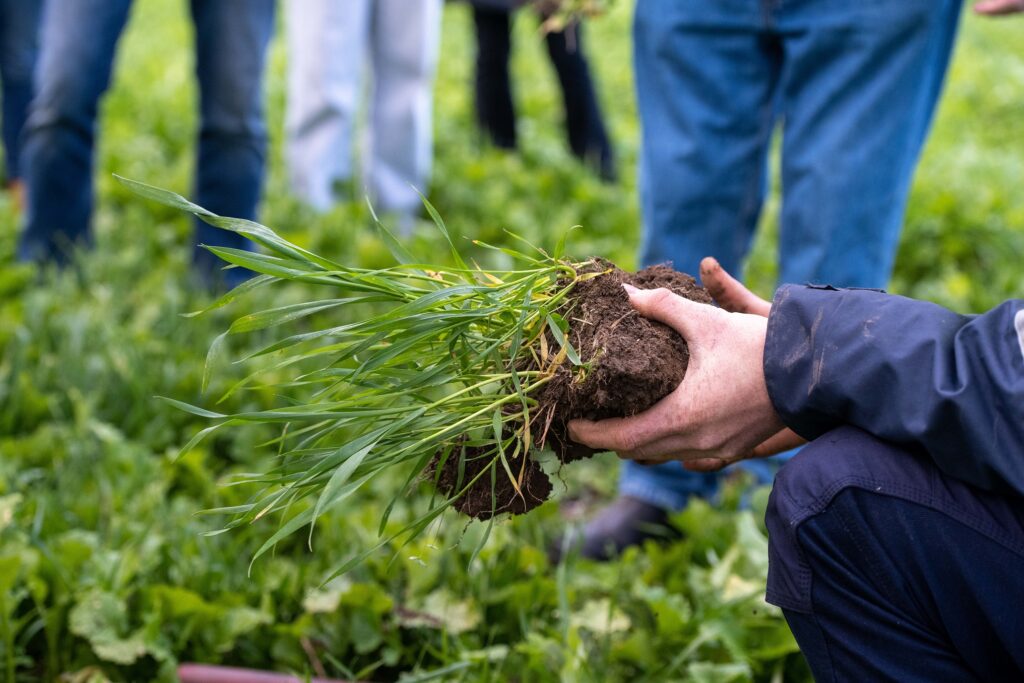On Wednesday, July 13th, 2022, 42 landholders came together in Huntly Memorial Hall to hear from the venerated farming expert, Colin Seis, at the Managing Pastures: Multi – Species Cropping Field Day. Some of the key messages in the discussion were about improving soil health using grazing animals, utilising multiple plants in a pasture and sowing a cash crop directly into a pasture, using the plants natural dormant cycle to suppress weeds.

As an attendee of the course, it was fantastic to hear how Colin has used regenerative agricultural techniques to enhance the biodiversity and productivity of his farm, and reduce his reliability on synthetic fertilisers and chemical sprays. On his farm in Gulgong, NSW, Colin has a variety of enterprises including merino sheep, native grasses and kelpie dogs. Colin was able to connect with all of the attendees of the course, and offer practical advice on how to implement regenerative practices at all scales of farming. Looking around at the other attendees, I note that while some of the attendees were long term, large scale livestock or cropping primary producers, the course was relevant and interesting to attendees like myself, who you might call ‘aspiring and enthusiastic’, and ready to learn new skills! Other attendees were landholders that may not consider themselves primary producers, but were interested and engaged in land management as a broader topic. All came away with something new to share at the end of the day.
The farm walk was a highlight for many, when we visited local farmer Steve Hawkins in Goornong. What an excellent opportunity to put Colin’s teachings into practice! Some of the existing ‘residents’ on the property were interested to investigate the newcomers (see Taisla and her new friends below!)



The key ideas I took away as a participant were that you do not need to immediately lay down large expenditures when implementing new practices. Colin suggested that when starting out on a grazing property, he would recommend to mob as many animals as possible to move together around the property and to shift the mob around your existing paddocks. You will see improvements in comparison to a set stocking regime.
In addition, for those with a pasture or cropping-based system, understanding the interaction between C3 (cool season adapted plants) and C4 based plants (warm season adapted plants) was invaluable to understanding how pasture cropping works to suppress weeds, provide a valuable forage source or cash crop, and maintain ground cover throughout the year.


The course was put together by the Healthy Landscapes: Practical Regenerative Agricultural Landscapes Program, which aims to provide landholders with practical regenerative skills to implement on their farms. Thanks to Colin Seis for presenting at the event, and Steve Hawkins for providing his farm as an example block.
If you would like to keep up with some of the other events that the Healthy Landscapes team put on, please sign up to the Healthy Landscapes e- newsletter, or view events coming up on the Healthy Landscapes website. The Healthy Landscapes Project thanks its supporting partners, for supporting us to put on the event.
0 Comments on "Pasture Cropping Field Day in Huntly"